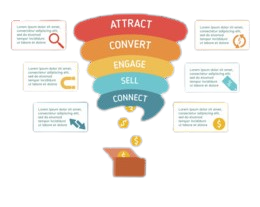
In the world of business, getting more customers is crucial to success. While advertising is a popular way to achieve this, it can be expensive, especially for those with limited resources or starting out in their business. A lot of people think that the best way to get more customers is by spending a lot of money on advertising. This is partly true if you have a large budget, but it’s also true if you have limited resources or are just starting out in your business.
The key is finding the right channels and setting up ways to communicate with potential customers so that they know about your product or service (& want it). This can be done through email marketing campaigns or even just sending out one simple email about how great your product is!
Here are some tips for converting leads into real customers:
To get valuable free insights delivered straight to your inbox

You’ll want to communicate with your leads in a way that is consistent and personal. Your communication should be clear, concise, and easy to understand. It’s also important to maintain a sense of urgency when communicating with your customers so that they know you are serious about helping them achieve their goals.
Once you have created an effective lead generation strategy, it’s time for you and the sales team to work together on converting those leads into customers!
A lot of businesses struggle with lead generation. The key to success is having a strategy in place that you can follow consistently, and then working together as a team to execute it effectively. If you’re looking for help creating a lead generation strategy and getting your team on the same page, contact us today!
A good way to start is by identifying your target audience. This may sound obvious, but it’s important to understand that your customers are not a homogeneous group—they experience different things, make different purchases and have varying needs. The best way to find out who they are is by getting their feedback on what they like and dislike about their current experiences with your brand or product.
Once you’ve identified this group of people (and ideally narrowed down some specific demographics), it’s time to focus on them directly.
While it’s important to have a general idea of what your audience wants, you also need to be able to cater specifically. This means taking into account the different ways that people use technology and how they interact with brands online. For example:
In order to understand your audience better, you must first know who they are.
Follow up with all leads.
You should follow up with each lead who is interested in your product or service, regardless of when you first contacted them. This is known as a “cycle-to-close” strategy and it’s critical for generating more sales from each lead because it shows that you’re serious about converting people into customers. You could use email, text messages, social media platforms like Facebook or LinkedIn groups to reach out to your prospects directly at any point during their journey through the buying process (and even after they’ve made their decision).
It’s also important to track every communication channel through which you interact with potential clients so that you can increase customer engagement rates by providing targeted content based on what they’ve expressed interest in before actually becoming customers themselves!
Once you have a good understanding of who your customers are and what they want, it’s time to develop your offer.
You can also use social media to your advantage by creating a Facebook business page, or Twitter account if you already have one. Use these platforms as an opportunity to interact with customers and answer their questions about your product or service. This will help create a rapport between you and your audience.

In conclusion, converting leads into customers requires a strategic approach that involves effective communication, focusing on the target audience, following up, and developing a compelling offer. Whether you are just starting out or have a large customer base, there are plenty of ways to improve your numbers. The key is to find out what works for your business and start small, then grow from there. By implementing these tips, you can increase your chances of converting leads into loyal customers and achieve success in your business.
In accordance with the current EU data protection laws, please take a minute to reviwe the term & conditions for using our services. Our terms describe how we use data and the options available to you.